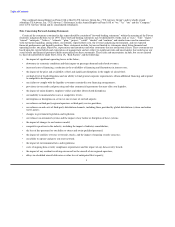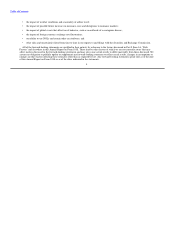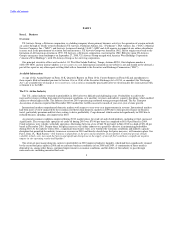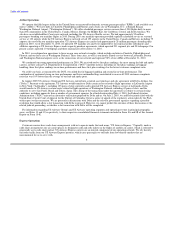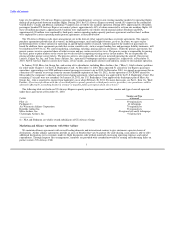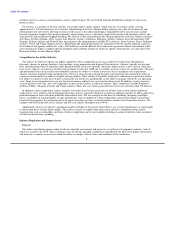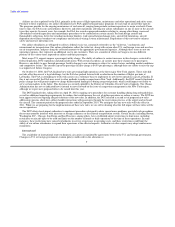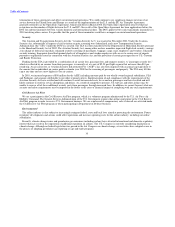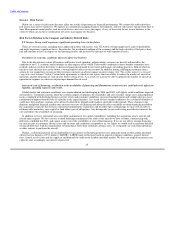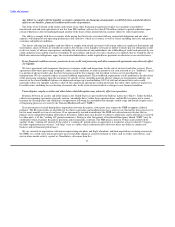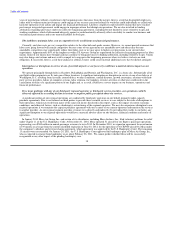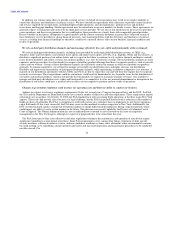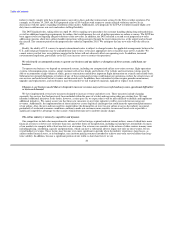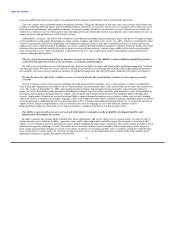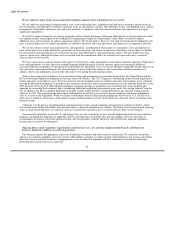US Airways 2010 Annual Report Download - page 14
Download and view the complete annual report
Please find page 14 of the 2010 US Airways annual report below. You can navigate through the pages in the report by either clicking on the pages listed below, or by using the keyword search tool below to find specific information within the annual report.
Table of Contents
The following table shows annual aircraft fuel consumption and costs for our mainline operations for 2008 through 2010 (gallons and
aircraft fuel expense in millions):
Average Price Aircraft Fuel Percentage of Total
Year Gallons per Gallon (1) Expense (1) Operating Expenses
2010 1,073 $ 2.24 $ 2,403 28.6%
2009 1,069 1.74 1,863 23.8%
2008 1,142 3.17 3,618 33.3%
(1) Includes fuel taxes and excludes the impact of fuel hedges. The impact of fuel hedges is described in Part II, Item 7 under "US
Airways Group's Results of Operations" and "US Airways' Results of Operations."
In addition, we incur fuel expenses related to our Express operations. Total fuel expenses for US Airways Group's wholly owned
regional airlines and affiliate regional airlines operating under capacity purchase agreements as US Airways Express for the years ended
December 31, 2010, 2009 and 2008 were $769 million, $609 million and $1.14 billion, respectively.
Fuel prices have fluctuated substantially over the past several years and sharply in the last three years. We cannot predict the future
availability, price volatility or cost of aircraft fuel. Natural disasters, political disruptions or wars involving oil-producing countries,
changes in fuel-related governmental policy, the strength of the U.S. dollar against foreign currencies, speculation in the energy futures
markets, changes in aircraft fuel production capacity, environmental concerns and other unpredictable events may result in fuel supply
shortages, additional fuel price volatility and cost increases in the future.
Insurance
We maintain insurance of the types that we believe are customary in the airline industry. Principal coverage includes liability for injury
to members of the public, including passengers, damage to property of US Airways Group, its subsidiaries and others, and loss of or
damage to flight equipment, whether on the ground or in flight. We also maintain other types of insurance such as workers' compensation
and employer's liability, with limits and deductibles that we believe are standard within the industry.
Since September 11, 2001, we and other airlines have been unable to obtain coverage for liability to persons other than employees and
passengers for claims resulting from acts of terrorism, war or similar events, which is called war risk coverage, at reasonable rates from
the commercial insurance market. US Airways, therefore, purchased its war risk coverage through a special program administered by the
FAA, as have most other U.S. airlines. The Emergency Wartime Supplemental Appropriations Act extended this insurance protection
until August 2005. The program was subsequently extended, with the same conditions and premiums, until September 30, 2011. If the
federal insurance program terminates, we would likely face a material increase in the cost of war risk coverage, and because of
competitive pressures in the industry, our ability to pass this additional cost to passengers may be limited.
Customer Service
In 2010, we continued our trend of strong operational performance. We believe that our focus on excellent customer service in every
aspect of our operations, including personnel, flight equipment, in-flight and ancillary amenities, on-time performance, flight completion
ratios and baggage handling, strengthens customer loyalty and attracts new customers.
The year ended December 31, 2010 marked a year of outstanding operational performance for US Airways. We received twelve first
place rankings, the most among the hub and spoke carriers, in three critical DOT monthly metrics including six first place rankings in
baggage handling, three first place rankings in on-time performance and three first place rankings for the lowest customer complaints
ratio.
On a full year basis as measured by the DOT, we ranked first in baggage handling and second in on-time performance. The
combination of continued strong on-time performance and fewer mishandled bags contributed to an overall 2010 customer complaints
ratio that was 10% better than the average of our hub and spoke peers.
13


